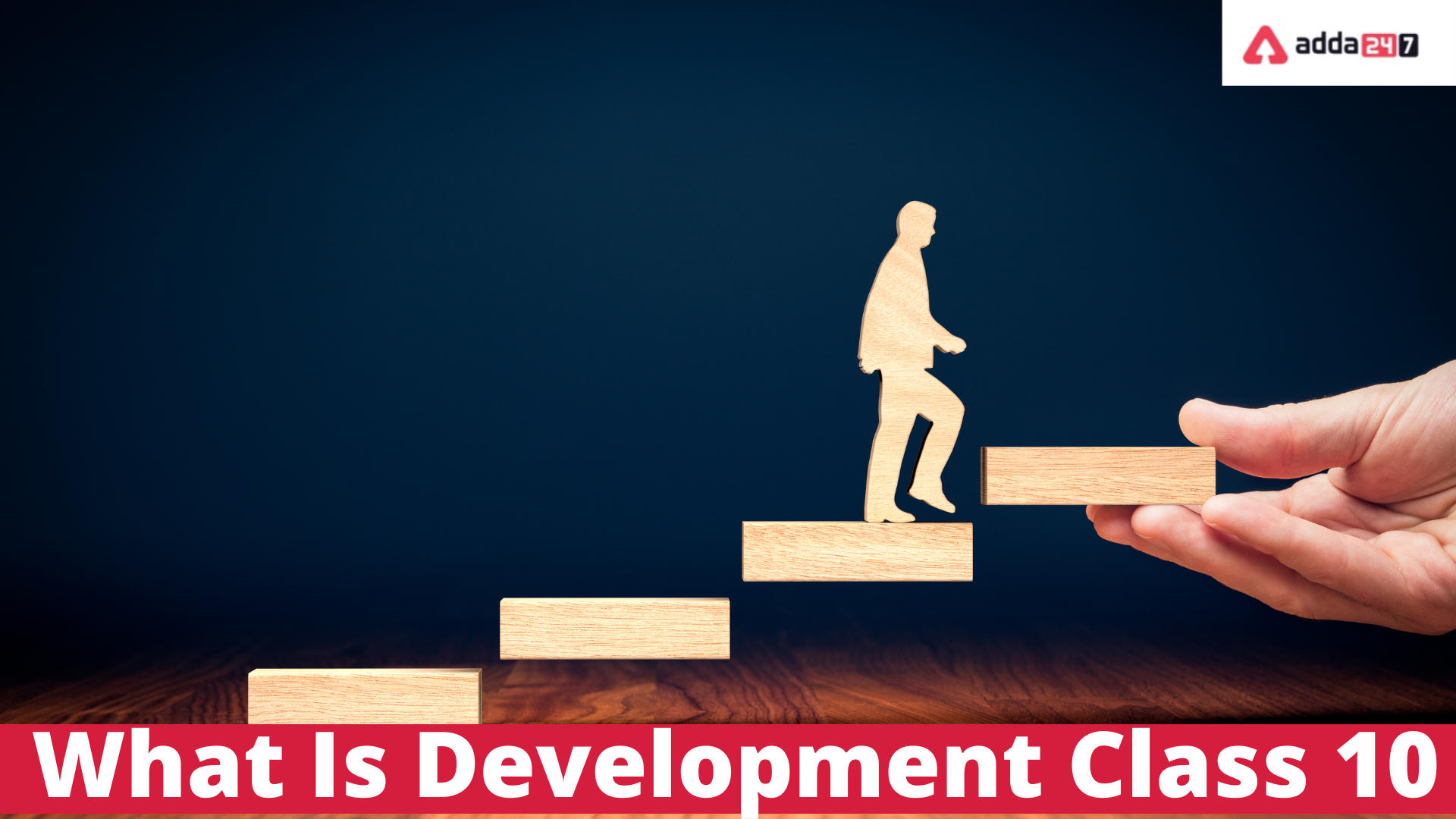What Is Development?
Development is any improvement in the standard of living of people in a specific country. Social and economic indicators are used to measure a country’s level of development.
“Development” is often a topic covered in the class 10 curriculum, typically in subjects like Social Science or Geography. This topic is important for students to understand economic and social development, particularly in the context of their own country.
What is Development Class 10th: Key points
Here are some key points that are usually covered in the class 10 curriculum regarding development:
- Definition of Development: Students are introduced to the concept of development, which encompasses improvements in the standard of living, access to basic needs, and overall well-being of a population.
- Indicators of Development: They learn about various indicators used to measure development, such as Gross Domestic Product (GDP), literacy rate, life expectancy, per capita income, and more. These indicators help in comparing the development levels of different regions or countries.
- Types of Development: Students may study different dimensions of development, including economic development (improvement in income and economic conditions), social development (access to education, healthcare, and social services), and sustainable development (balancing economic growth with environmental protection).
- Challenges to Development: The curriculum often covers the challenges and obstacles to development, including poverty, inequality, lack of access to education and healthcare, corruption, and environmental degradation.
- Development Programs and Policies: Students may learn about various development programs and policies implemented by governments to promote economic and social development, such as poverty alleviation programs, education initiatives, healthcare schemes, and more.
- Global Disparities: The class may also discuss global disparities in development, highlighting the differences in development levels between developed and developing countries.
- Sustainable Development: There is often an emphasis on the importance of sustainable development, which aims to meet the needs of the present without compromising the ability of future generations to meet their own needs.
It’s important to note that the specific content and curriculum can vary from one educational board or system to another and from one country to another. Therefore, the exact details of what is covered in a class 10 development curriculum can vary. If you have a specific textbook or syllabus in mind, it’s a good idea to refer to that for precise information.
What Is Development Class 10
Development is any improvement in the standard of living of people in a specific country. It includes factors related to money, such as wealth, which we call economic factors and factors related to people, such as literacy, which we call social factors.
A developed country is one that is considered to have a high standard of living, such as:
- good housing
- good education system
- longer life expectancy
A developing country is one that is considered to have a lower standard of living, such as:
- Lack of medical care
- Limited access to education
- More people working in agriculture
For example, the UK is considered a developed country and Ethiopia is considered a developing country.
What is Economic Development Class 10
Development is measured using development indicators.
Two sets of indicators are used to gather information about a country. Both social and economic indicators can be used to determine if a country is developed or developing, and to identify the main similarities and differences between them.
What Is Development?- Social indicators
A social indicator tends to focus on people. Social indicators measure the access a population has to factors such as:
- Education
- Nutrition
- Health
Examples Of Social Indicators
- Life expectancy – the average age to which a person lives, eg this is 79 in the UK and 48 in Kenya.
- Infant mortality rate – counts the number of babies, per 1000 live births, who die under the age of one. This is 5 in the UK and 61 in Kenya.under the age of one. This is 5 in the UK and 61 in Kenya.
- Calories per person – the number of calories consumed per person per day.
- Literacy rate – is the percentage of adults who can read and write. This is 99 per cent in the UK, 85 per cent in Kenya and 60 per cent in India
What Is Development?- Economic Indicators
An economic indicator tends to focus on money and wealth. They are a measure of a country’s wealth and how it is generated. They give a very accessible measure of the amount of wealth in the economy of one country compared with another.
Examples Of Economic Indicators
- Gross National Product (GNP) measures the total amount a country makes from selling all the goods and services it provides to other countries around the world
- Gross National Income (GNI) per capita (Per capita means per person). The value of a country’s income, divided by the number of people in that country.
- Percentage of population employed in agriculture measures what percent of the total population works in the farming sector. This is higher in developing countries as many people farm to grow their own food. In more developed countries this percentage would be lower as farms are run as businesses growing crops to make a profit.
Join the Adda247 Saksham batch by clicking on this link.
Class 10 students can now join the board exam preparation batch by Adda247 and ace their board exam.
What Is Development?- Interpreting Development Data
Human Development Index (HDI)
In order to try to streamline the many different measures that were being used to measure development, in 1990 the United Nations decided that it was time to combine some measures into a more usable format.
The HDI was introduced to combine three measures – life expectancy (a social measure), education (average number of years of schooling and expected years of schooling– a social measure) and gross national income per capita (an economic measure).
Each of the different measures is then ranked in order. A country with a very high life expectancy will score +1 and a country with a low score will be close to 0. The two other measures are also scored and a final rank order is achieved.
What Is Development?- According to The UN Human Development Report
| Country | HDI value | Life expectancy (years) | Mean years of schooling (years) | Expected years of schooling (years) | GNI per capita ($PPP) |
| 1. Norway | 0.943 | 81.1 | 12.6 | 17.3 | 47,557 |
| 2. Australia | 0.929 | 81.9 | 12.0 | 18.0 | 34,431 |
| 3. Netherlands | 0.910 | 80.7 | 11.6 | 16.8 | 36,402 |
| 4. USA | 0.910 | 78.5 | 12.4 | 16 | 43,017 |
| 5. New Zealand | 0.908 | 80.7 | 12.5 | 18 | 23,737 |
| Country | HDI value | Life expectancy (years) | Mean years of schooling (years) | Expected years of schooling (years) | GNI per capita ($PPP) |
| 183. Chad | 0.328 | 49.6 | 1.5 | 7.2 | 1,105 |
| 184. Mozambique | 0.322 | 50.2 | 1.2 | 9.2 | 898 |
| 185. Burundi | 0.316 | 50.4 | 2.7 | 10.5 | 368 |
| 186. Niger | 0.295 | 54.7 | 1.4 | 4.9 | 641 |
| 187. DR Congo | 0.286 | 48.4 | 3.5 | 8.2 | 280 |









 CUET UG Final Answer Key 2025 Revised, D...
CUET UG Final Answer Key 2025 Revised, D...
 DU Cut off 2025, Delhi University Expect...
DU Cut off 2025, Delhi University Expect...
 OUAT Result 2025 OUT @ouat.nic.in: Check...
OUAT Result 2025 OUT @ouat.nic.in: Check...

